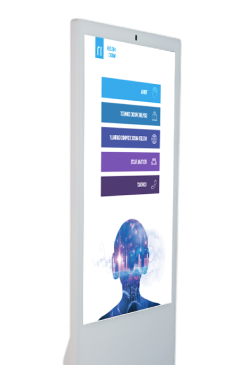

Event Solutions

Our Work

Why Interactive Kiosks are Sweeping America
Interactive kiosks can be defined as self-service devices organized in a public setting in order to help users access applicable digital information and content through a highly usable interface. From bill payment to retail businesses to tourism and wayfinding, the use of interactive kiosks has become extremely popular. Even in the healthcare trade, interactive kiosks have started becoming a favored choice by hospitals and medical centers, since these interactive kiosks aid in obtaining personal data from the users rapidly. [caption id="attachment_8163" align="alignnone" width="640"]The Modern Groom is now able to display its interactive touch screen kiosks at multiple bridal stores[/caption] Waiting in line remains a major annoyance for many customers in a variety of settings, where they are required to stand and wait while others take their turns to perform certain necessary actions. This is where interactive solutions work as time savers. Methodically customizable in nature, interactive kiosks act as a representative of your organizations, replacing an assortment of services that have historically been carried out physically. With most industries now choosing to operate online, customers nowadays seek opportune technology for transactions. By offering consumers the option to develop an interactive touchscreen, a business can allow them to enjoy the self-service experience in a business setting, thereby boosting the development of the business. Most importantly, interactive kiosks play a noticeable role in helping a business save money by eradicating the necessity of hiring a customer service team. This, in turn, permits the business to retain employees accountable for jobs that are vital to the operation. In a nutshell, self-service kiosks will operate as a substitute for an employee, freeing up cash one could have otherwise expended on providing lucrative packages for personnel. Interactive kiosks are almost universal. Where airport authorities use them to print boarding passes for travelers, libraries resort to the technology to allow folks to weigh up their own resources. Eateries, bistros, and cafeterias, on the other hand, include the system so as to allow customers to place orders and pay bills effortlessly. Also, shopping malls, hotels, and banks have involved the technology to streamline their processes. The business world clearly has many more years of excellent growth to look forward to when it comes to digital technology.